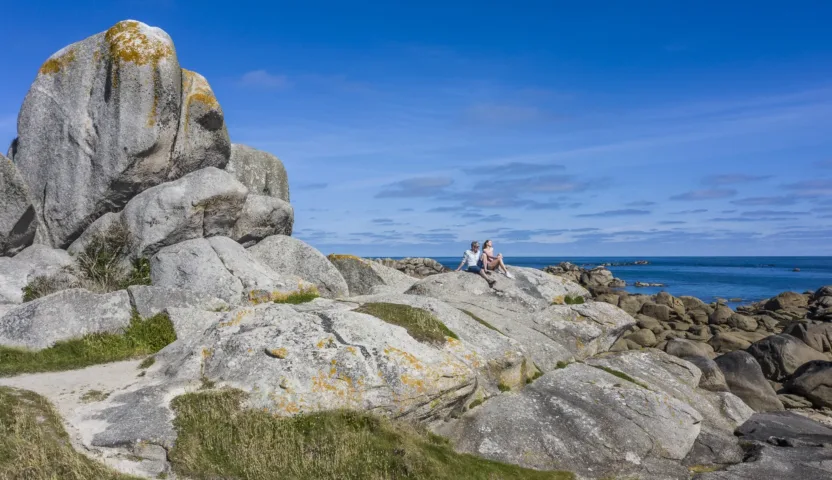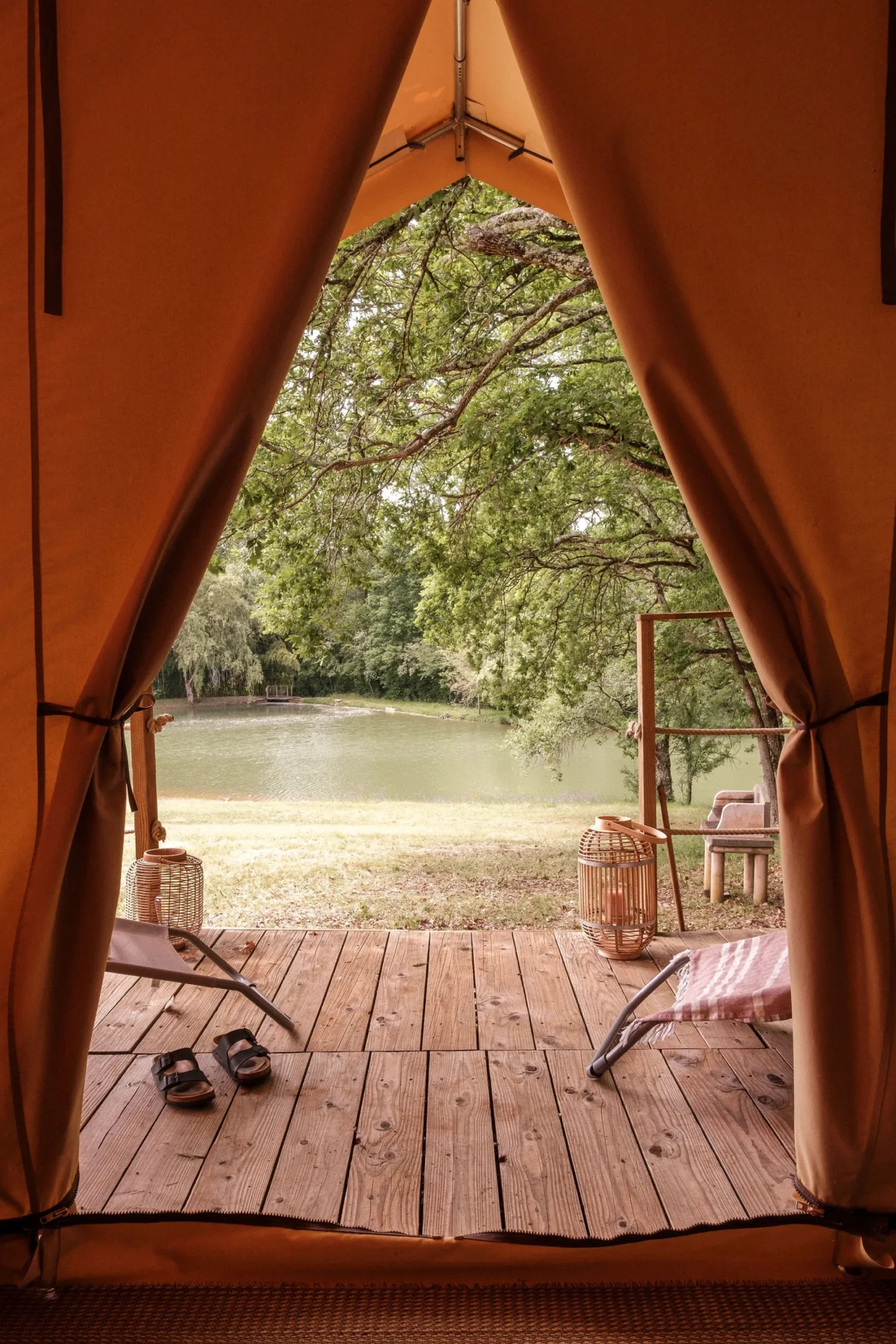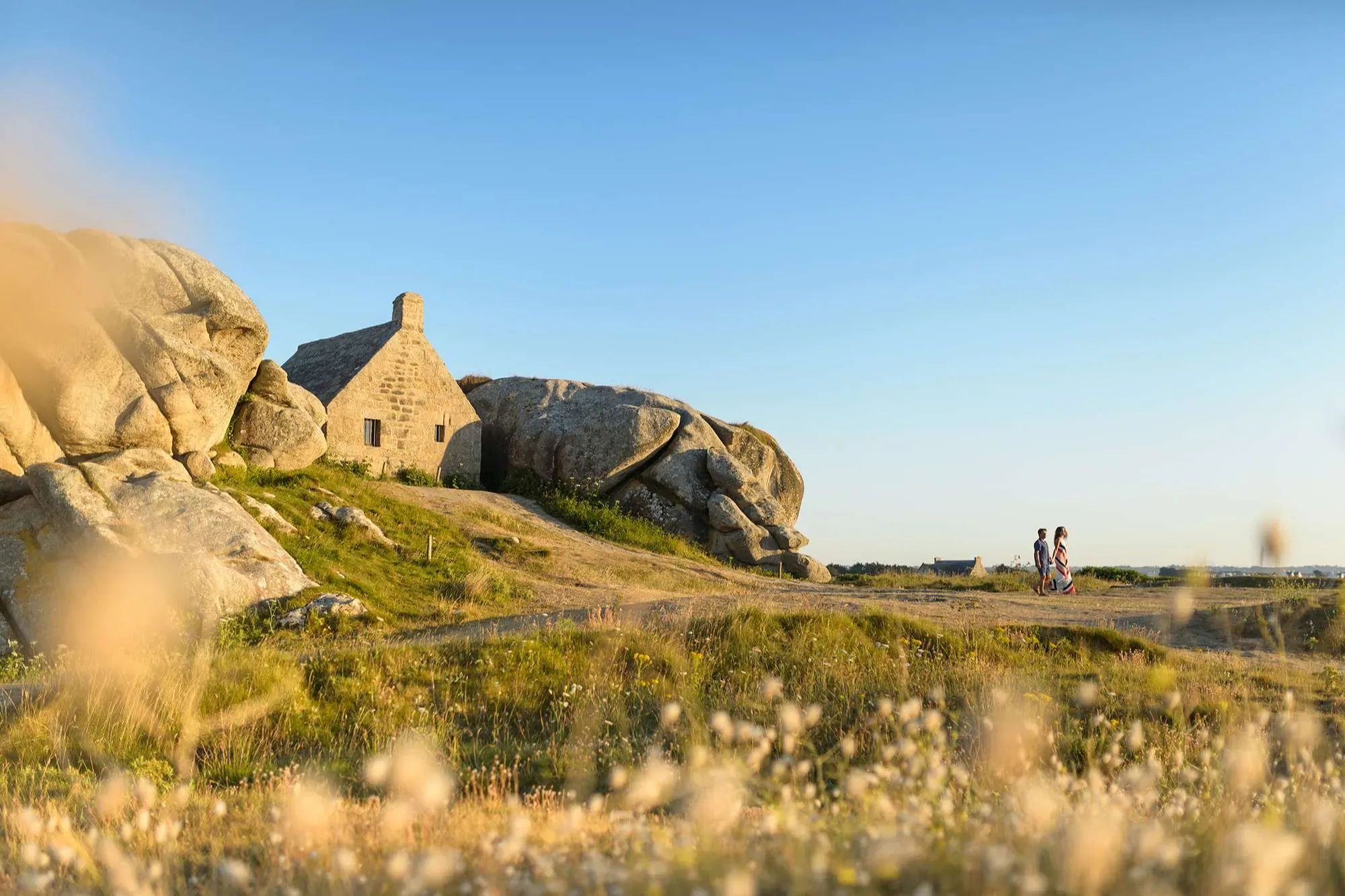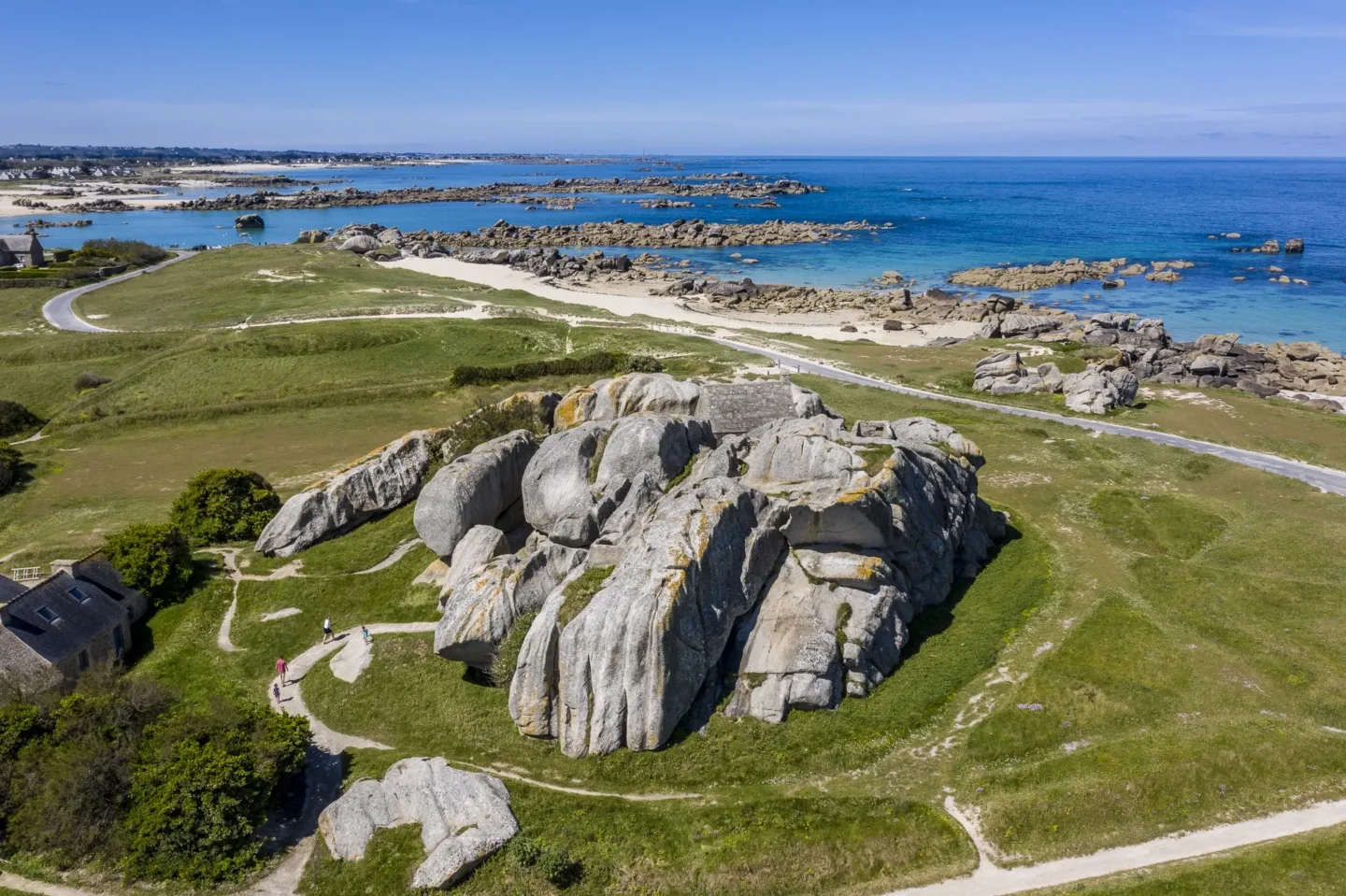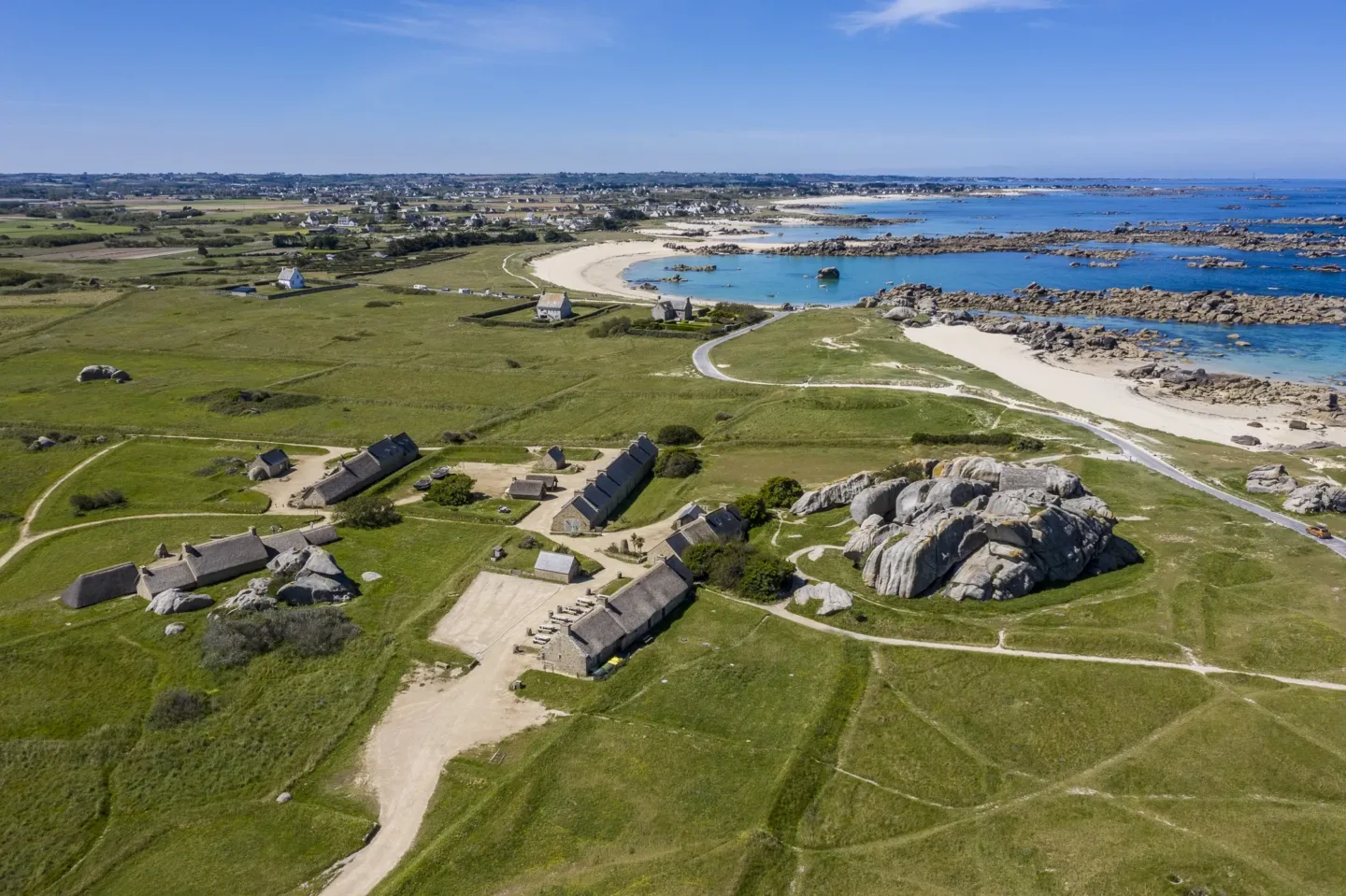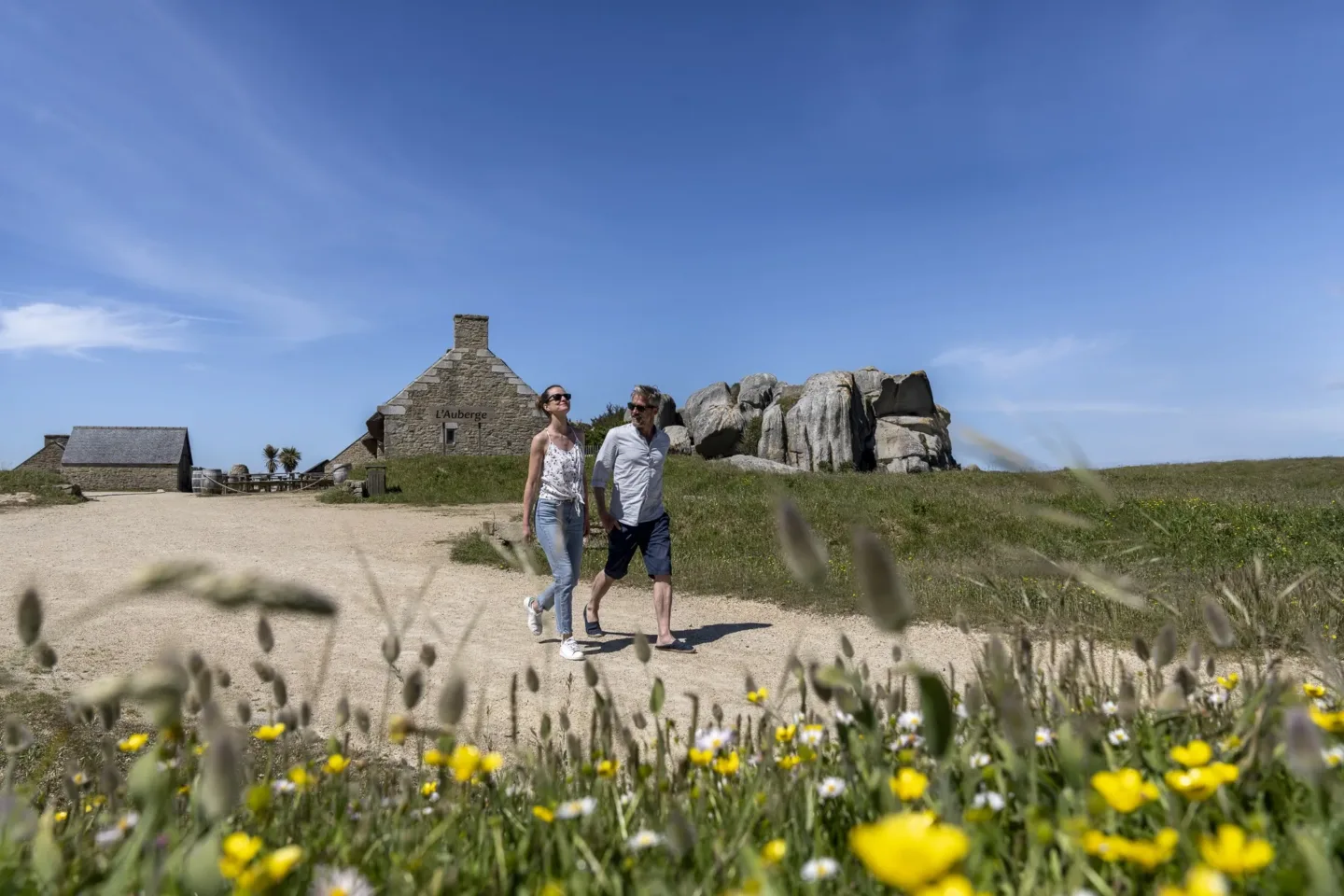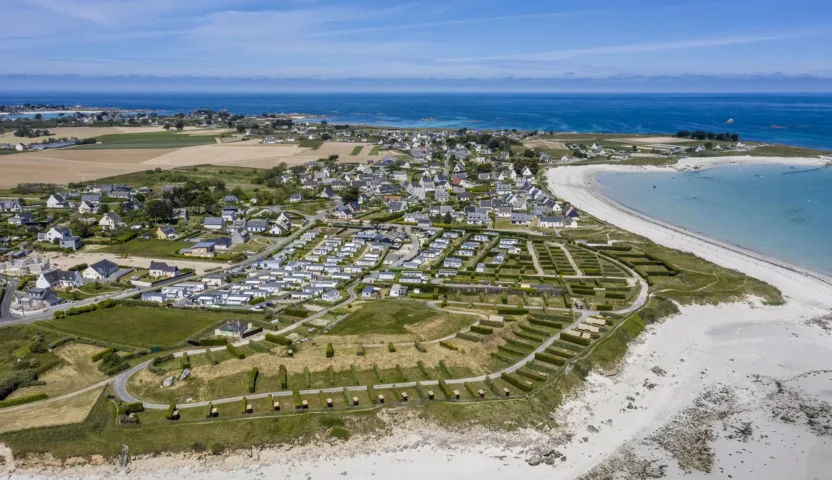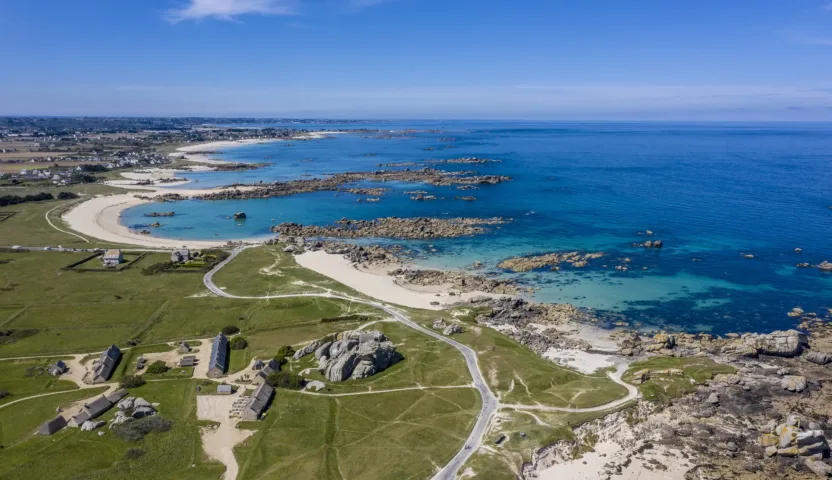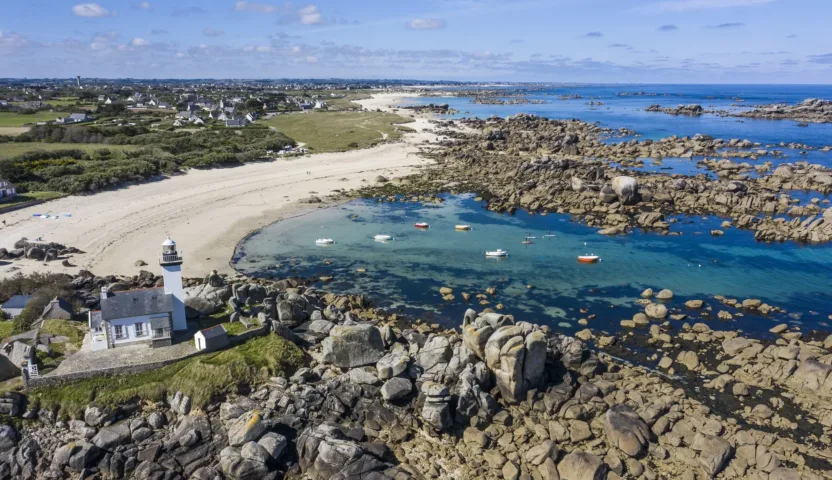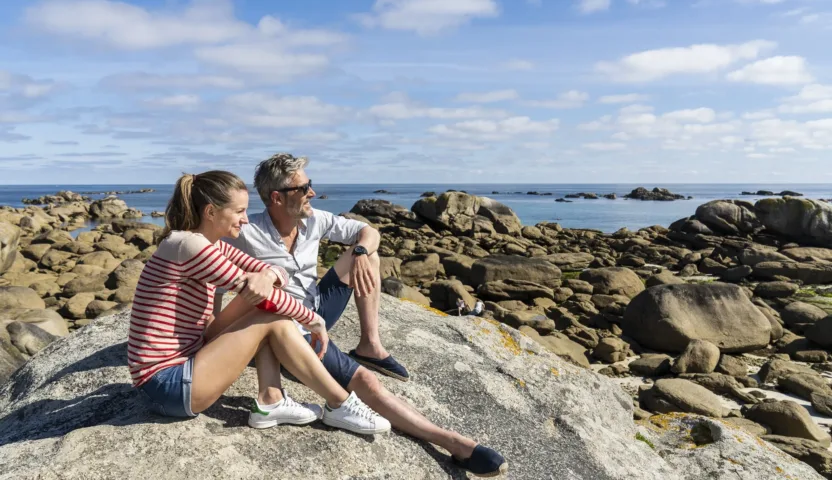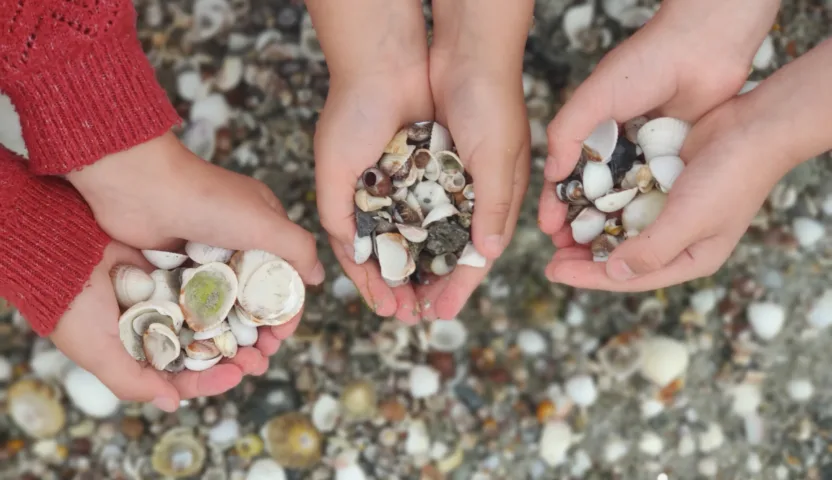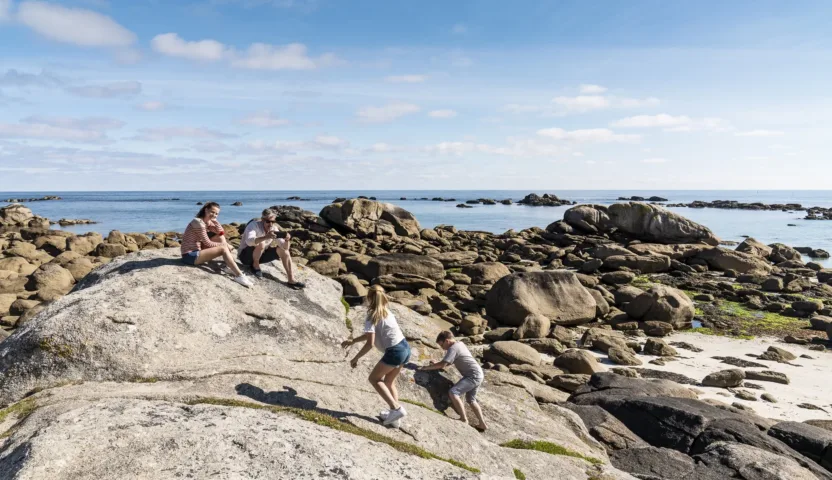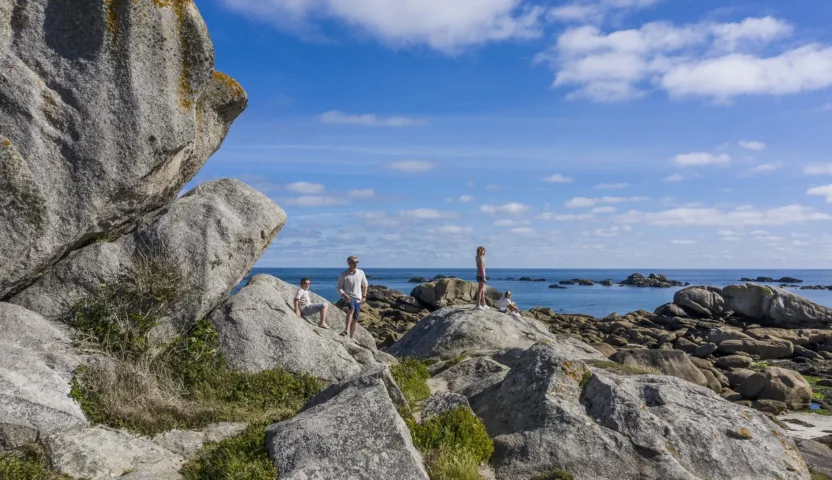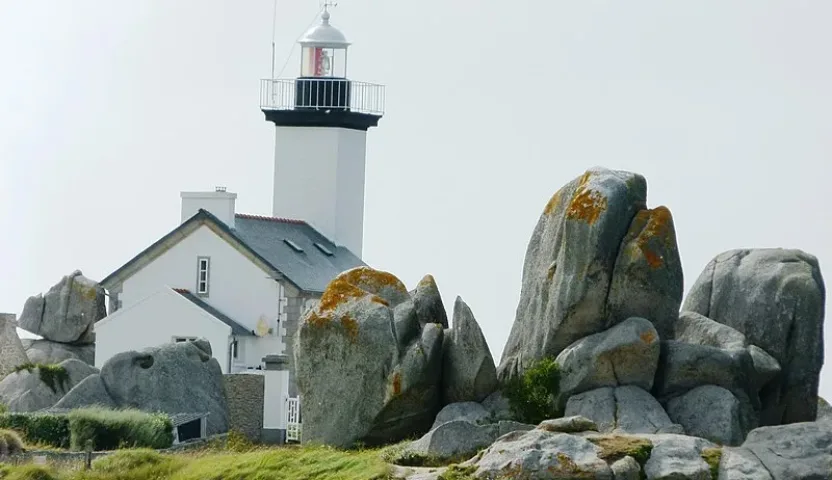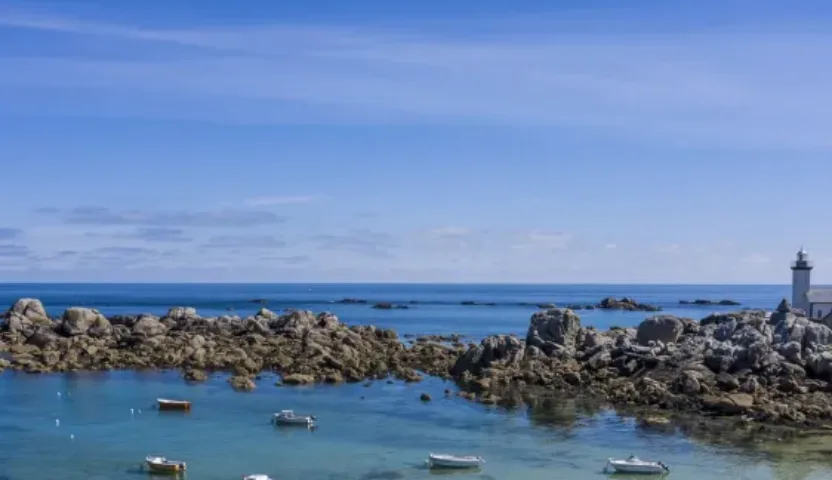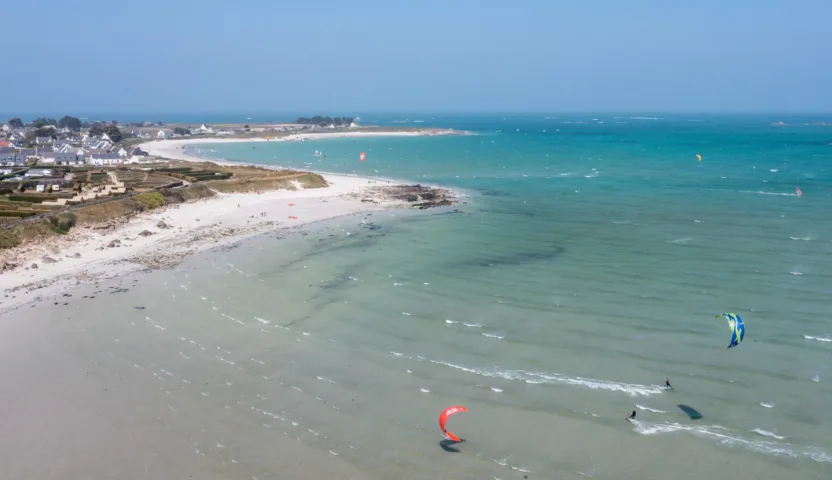Histoire et culture de Meneham
Édifié au milieu du 18e siècle à 21 mètres au-dessus de la mer, entre le phare de Pontusval et le phare de l’Île Vierge, le site de Meneham est d’abord un corps de garde, dont l’emplacement stratégique permet de protéger le littoral de la Bretagne nord. En 1792, la milice qui occupe le site est remplacée par des douaniers : premiers véritables habitants de Meneham, ils s’établissent dans la caserne avec leurs familles au milieu du 19e siècle, avant de laisser place aux pêcheurs, goémoniers et paysans.
Histoire de la pêche à Meneham
Le destin du village de Meneham est indissociable de l’histoire de la pêche et du métier de goémonier en Bretagne. Dans ce hameau du village de Kerlouan, les premiers paysans cultivateurs se sont rapidement tournés vers les richesses de la mer, à travers l’activité de pêche côtière et la récolte du goémon, utilisé comme engrais dans les champs ou brûlé pour en retirer de l’iode.
La vie des habitants de Meneham
La situation particulière du hameau, exposé face à la mer et à distance de toute ville ou centre d’échanges, rend la vie quotidienne difficile pour les habitants. Petits et grands s’entraident dans le village pour mener à bien les tâches et travaux nécessaires à tous : la pêche, la récolte des algues, leur séchage et leur brûlage dans des fours dédiés, le travail de la terre, l’élevage ou encore le lavage du linge. L’année est cependant rythmée par les fêtes Pagan et leurs réjouissances : danses, chants et rires résonnent au village.
Les légendes et les coutumes de Meneham
Meneham, hameau emblématique de Bretagne aux chaumières blotties contre les rochers, charrie d’inévitables légendes. L’histoire du village est étroitement liée au mythe des naufrageurs : longtemps, les habitants du hameau côtier de Kerlouan sont considérés comme des pilleurs d’épaves qui provoqueraient les naufrages lors des nuits de tempête. En réalité, le pays Pagan est une terre de partage et d’entraide où ont perduré des coutumes festives et conviviales comme la confection du Pastès (pain de fête) ou la pratique de la Dañs Round (ronde traditionnelle de Bretagne).
